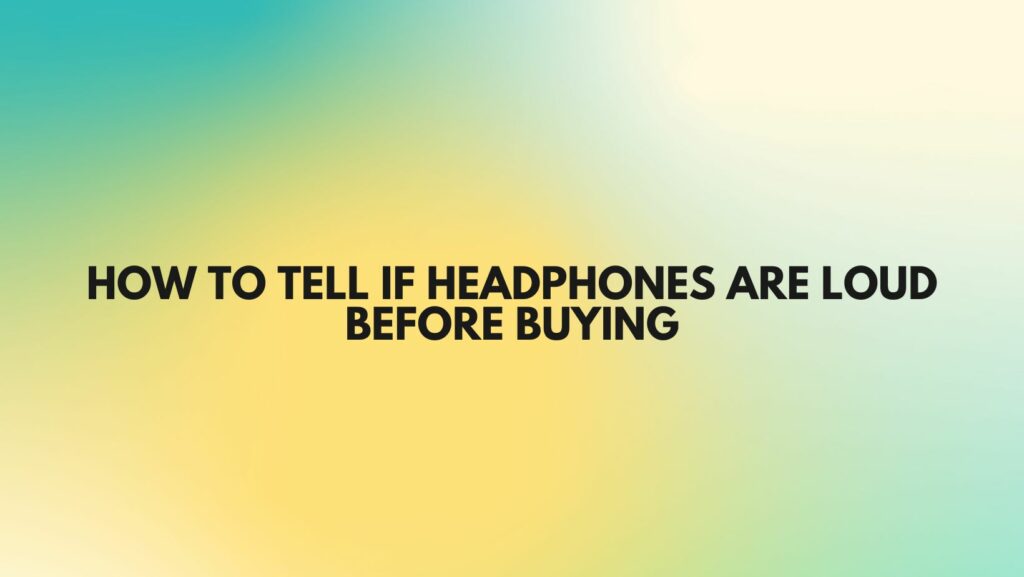When shopping for headphones, determining the potential volume levels is crucial, especially for those who prefer immersive audio experiences or require sufficient loudness for specific activities. Understanding how to gauge headphone loudness before buying can help consumers make informed decisions. In this article, we’ll explore effective methods for assessing headphone volume and ensuring they meet your auditory needs.
- Research Specifications: Start by researching the specifications of the headphones you’re interested in. Look for information on impedance, sensitivity, and maximum power handling capacity. Impedance, measured in ohms (Ω), indicates the headphone’s resistance to electrical current. Sensitivity, measured in decibels per milliwatt (dB/mW), represents how efficiently headphones convert electrical signals into sound waves. A higher sensitivity rating typically results in louder volume levels.
- Read User Reviews: User reviews can offer valuable insights into the perceived loudness of headphones. Look for feedback from users who have tested the headphones at various volume levels and in different environments. Pay attention to comments about the headphones’ ability to produce loud, clear sound without distortion, particularly at higher volume settings.
- Test in-store: Whenever possible, visit a store that allows you to test headphones before making a purchase. Bring along your favorite music tracks or audio clips with dynamic range to assess the headphones’ volume capabilities. Gradually increase the volume while listening for any signs of distortion or clipping, which may indicate the headphones’ limits in terms of loudness.
- Consider Source and Amplification: The source device and amplification can significantly impact headphone volume levels. If you plan to use headphones with a smartphone, tablet, or laptop, consider their output power capabilities. Some headphones may require additional amplification to reach optimal volume levels, particularly those with high impedance ratings. Research compatible headphone amplifiers if needed.
- Evaluate Noise Isolation: Noise isolation plays a crucial role in perceived loudness, especially in noisy environments. Closed-back headphones offer better noise isolation by blocking out external sounds, allowing you to hear your audio content more clearly even at lower volume levels. Consider the headphones’ design and construction to determine their effectiveness in isolating external noise.
- Look for Distortion-Free Sound: Loudness is only beneficial if it’s accompanied by clear, distortion-free sound. Listen for any signs of distortion, clipping, or harshness, particularly in the midrange and treble frequencies. High-quality headphones should maintain clarity and fidelity even at louder volume levels, enhancing your listening experience without compromising sound quality.
Conclusion: Assessing headphone loudness before buying requires a combination of research, testing, and careful consideration of various factors. By examining specifications, reading user reviews, testing in-store, considering source and amplification, evaluating noise isolation, and listening for distortion-free sound, consumers can determine whether headphones meet their volume requirements and provide an enjoyable listening experience. Making informed decisions ensures that you find headphones that deliver the perfect balance of loudness, clarity, and fidelity to suit your auditory preferences and needs.


